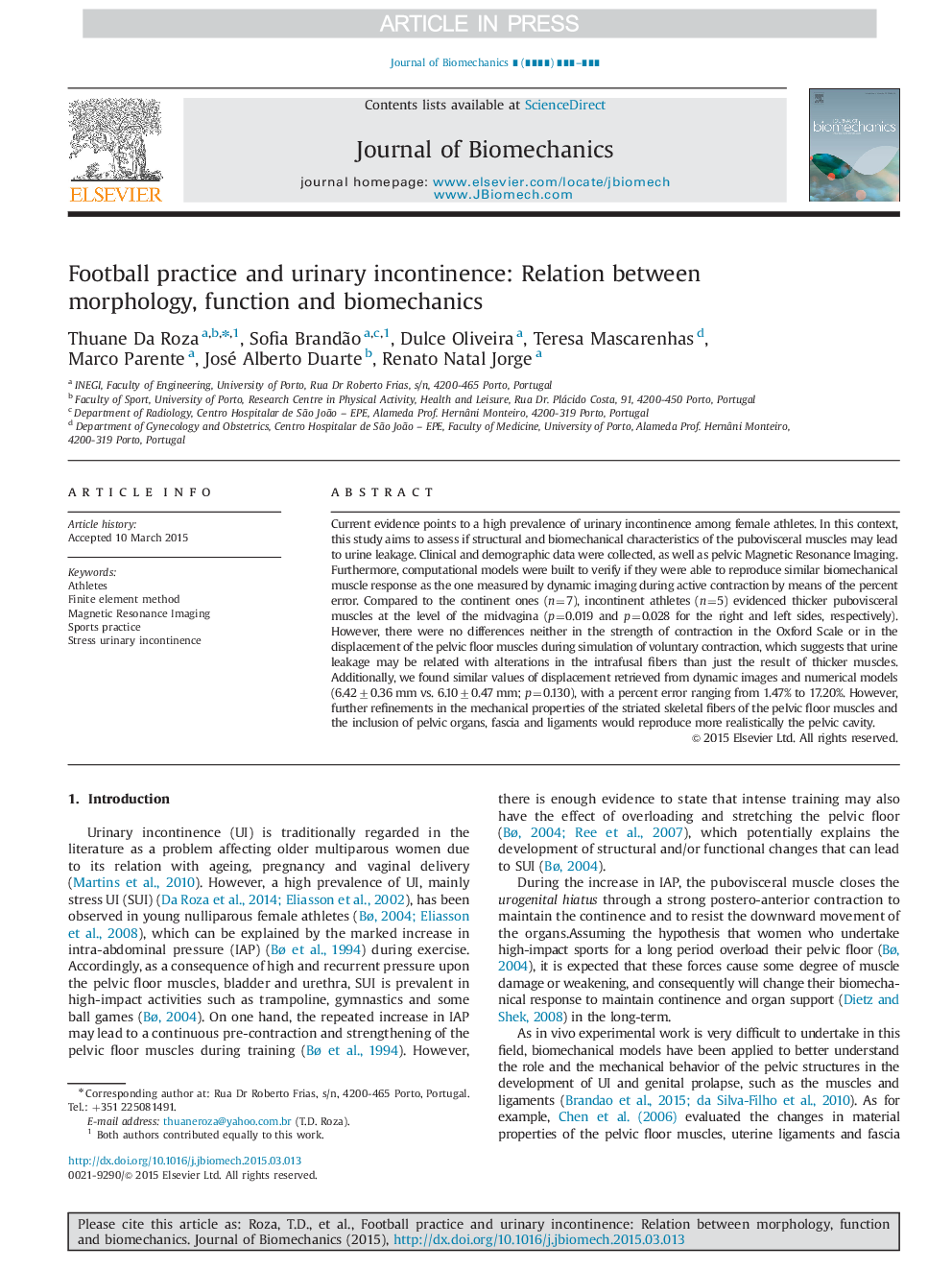| Article ID | Journal | Published Year | Pages | File Type |
|---|---|---|---|---|
| 10431360 | Journal of Biomechanics | 2015 | 6 Pages |
Abstract
Current evidence points to a high prevalence of urinary incontinence among female athletes. In this context, this study aims to assess if structural and biomechanical characteristics of the pubovisceral muscles may lead to urine leakage. Clinical and demographic data were collected, as well as pelvic Magnetic Resonance Imaging. Furthermore, computational models were built to verify if they were able to reproduce similar biomechanical muscle response as the one measured by dynamic imaging during active contraction by means of the percent error. Compared to the continent ones (n=7), incontinent athletes (n=5) evidenced thicker pubovisceral muscles at the level of the midvagina (p=0.019 and p=0.028 for the right and left sides, respectively). However, there were no differences neither in the strength of contraction in the Oxford Scale or in the displacement of the pelvic floor muscles during simulation of voluntary contraction, which suggests that urine leakage may be related with alterations in the intrafusal fibers than just the result of thicker muscles. Additionally, we found similar values of displacement retrieved from dynamic images and numerical models (6.42±0.36 mm vs. 6.10±0.47 mm; p=0.130), with a percent error ranging from 1.47% to 17.20%. However, further refinements in the mechanical properties of the striated skeletal fibers of the pelvic floor muscles and the inclusion of pelvic organs, fascia and ligaments would reproduce more realistically the pelvic cavity.
Related Topics
Physical Sciences and Engineering
Engineering
Biomedical Engineering
Authors
Thuane Da Roza, Sofia Brandão, Dulce Oliveira, Teresa Mascarenhas, Marco Parente, José Alberto Duarte, Renato Natal Jorge,
